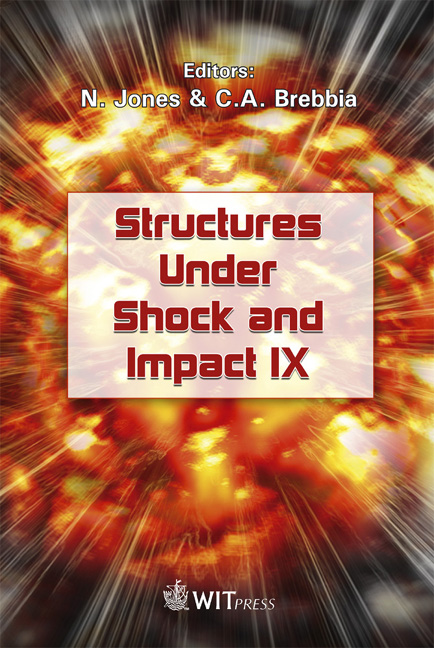Experimental And Numerical Investigations On Projectile Penetration Into Polypropylene Fiber Reinforced Concrete Targets
Price
Free (open access)
Transaction
Volume
87
Pages
9
Published
2006
Size
507 kb
Paper DOI
10.2495/SU060221
Copyright
WIT Press
Author(s)
Q. Fang, X. F. Hou, Y. N. Zhang & Y. D. Zhang
Abstract
Dynamic tests were performed on 64 polypropylene fiber reinforced concrete (PFRC) specimens by the Split Hopkinson Pressure Bar (SHPB) with the diameter of 74 mm. The dynamic stress-strain curves at the strain rate between 10 s-1 and 102 s-1 were obtained. The effects of the strain rate, fiber volume content and static strength on dynamic compression strength were analyzed. The penetration of the armor piercing (AP) projectile into the PFRC targets was investigated experimentally, and simulated by the LS-DYNA. The parameters of the Johnson-Homquist-Concrete (JHC) model were obtained by the SHPB test data and other relevant experimental data. A good agreement between the numerical predictions for the penetration depth and experimental data is observed. Keywords: polypropylene fiber reinforced concrete, SHPB, strain rate, penetration, numerical simulation, LS-DYNA. 1 Introduction It is well known that the addition of small amount of polypropylene fibers into concrete can enhance the tensile and fatigue resistance and toughness of concrete. Although the mechanical properties of PFRC have been investigated intensively, and widely used in engineering, most of these investigations and applications were only limited to the static case and low fiber volume contents (0.05~0.3%)[1-4]. In this paper, the dynamic properties of PFRC with high fiber volume content were studied experimentally by the SHPB with diameter of 74 mm. The strain rate was in the range of 101 s-1 to 102 s-1. The penetration of the 37 mm AP
Keywords
polypropylene fiber reinforced concrete, SHPB, strain rate, penetration, numerical simulation, LS-DYNA.





